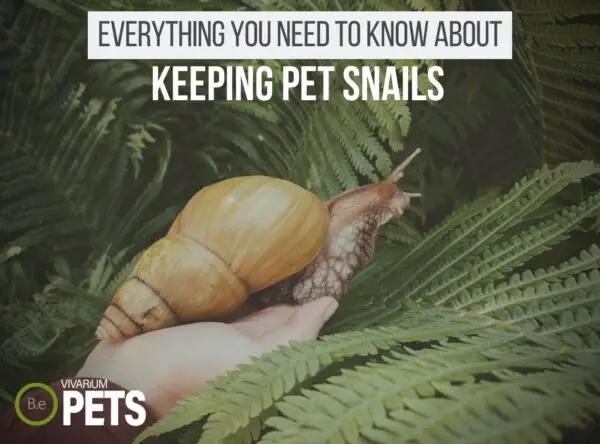Are you looking for a small exotic pet that is low–maintenance, easy to care for, and full of personality?
Pet snails may be the perfect fit for you!
In this definitive guide, we‘ll provide all the information you need to know about snails as pets.
We will include tips for setting up their enclosure, offer full care guides, and present a list of cute snails worth keeping.
Let‘s dive in and explore the wonderful world of pet snails!
Table Of Contents:
ToggleThe Best Types Of Pet Snails
Many snails can make great pets due to their low-maintenance requirements, unpredictable personalities, and variety of colors and sizes.
There are mainly two types of snails most people consider keeping as a pet; aquatic snails and land snails. These snails will require specific types of vivariums.
Aquatic snails are more suitable for aquariums or ripariums. They are usually small and easy to care for, and they can help keep your enclosure clean by eating algae and debris.
Land snails are more suitable for terrariums. These snails are equally as entertaining, and they can come in a range of sizes.
It’s common to refer to these types of gastropods as terrarium snails and aquarium snails. Paludariums can easily house both types of pet snails.
Terrarium Snails As Pets
Terrarium snails are a great addition to tanks that have enough dry land space for inhabitants to establish themselves on.
They can help keep the terrarium clean by eating algae and decaying material, and they can also provide a unique decorative element.
When choosing a type of terrarium snail, it’s important to select one that is compatible with the other animals in the terrarium, as some species may be aggressive.
It’s also essential to choose a species that is well–suited to the environment in the terrarium, as some species require high humidity and others require a drier ecosystem.
Find the perfect pet snail for your next terrarium build with our curated list of care guides below:


Burgundy Snail (Helix pomatia)


Chocolate-band Snail (Eobania vermiculata)
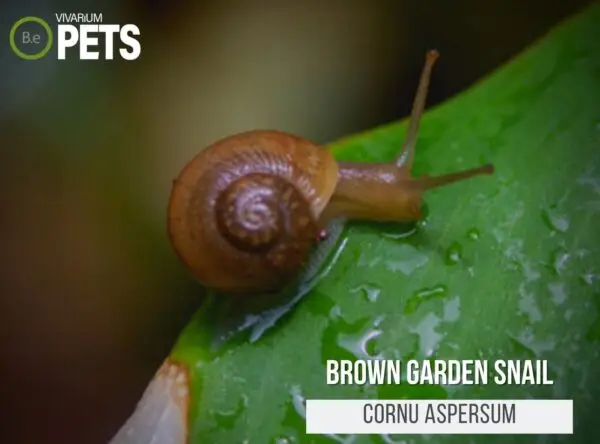

Garden Snail (Cornu aspersum)


Giant African Snail (Lissachatina fulica)
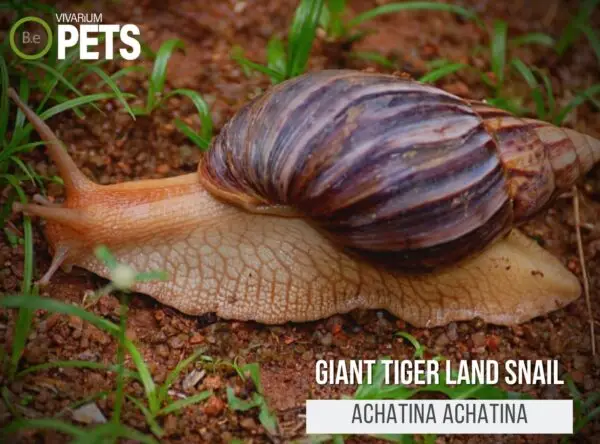

Giant Tiger Land Snail (Achatina achatina)


Green Garden Snail (Cantareus apertus)
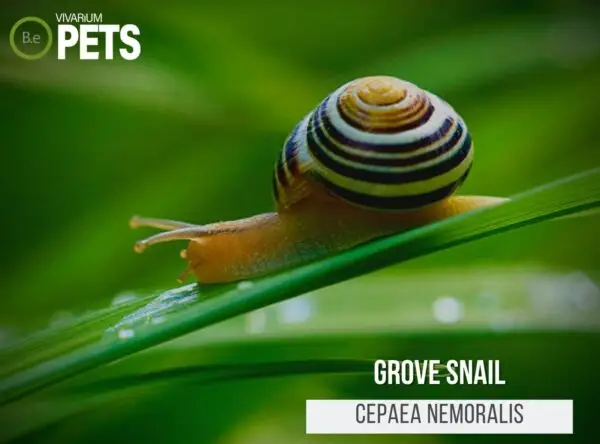

Grove Snail (Cepaea nemoralis)


Milk Snail (Otala lactea)
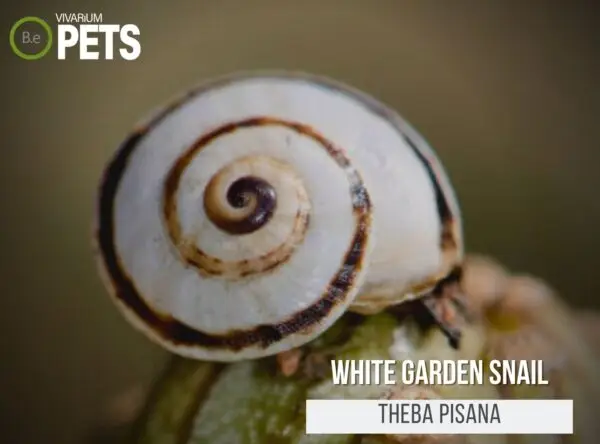

White Garden Snail (Theba pisana)
Aquarium Snails As Pets
Aquarium snails are a great addition to tanks that have enough aquatic space for them to swim and establish themselves in.
They can help keep the aquarium clean by eating algae and debris, and they can also provide a unique decorative element.
When choosing a type of aquarium snail, it’s also a good idea to select one that is compatible with the other animals in the tank.
It’s also essential to choose a species that is well-suited to the environment in the aquarium, as some species require things like high salinity and others require a lower salinity.
Find the perfect pet snail for your next aquarium build with our curated list of care guides below:


Assassin Snail (Anentome helena)


Bladder Snail (Physella acuta)


Great Pond Snail (Lymnaea stagnalis)
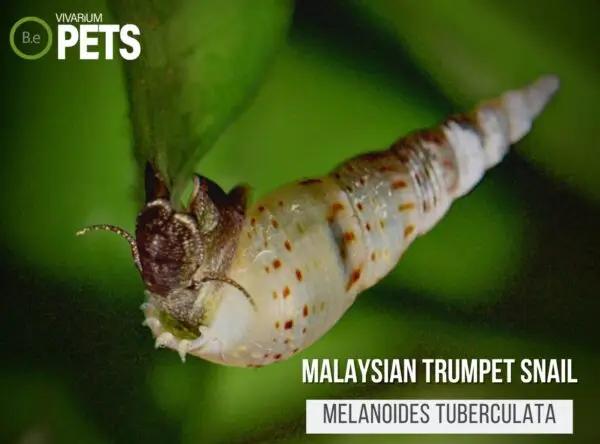

Malaysian Trumpet Snails (Melanoides tuberculata)


Mystery Snail (Pomacea bridgesii)
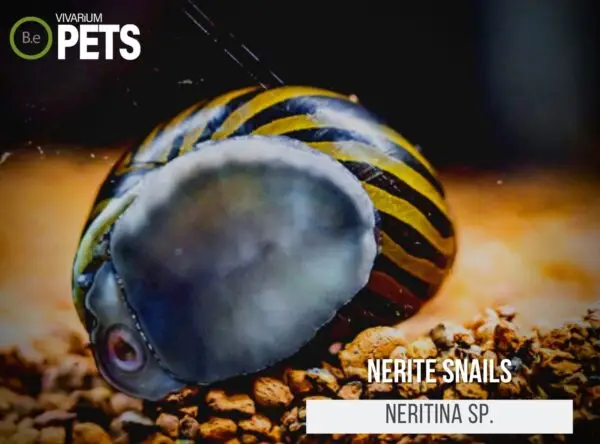

Nerite Snails (Neritina sp.)
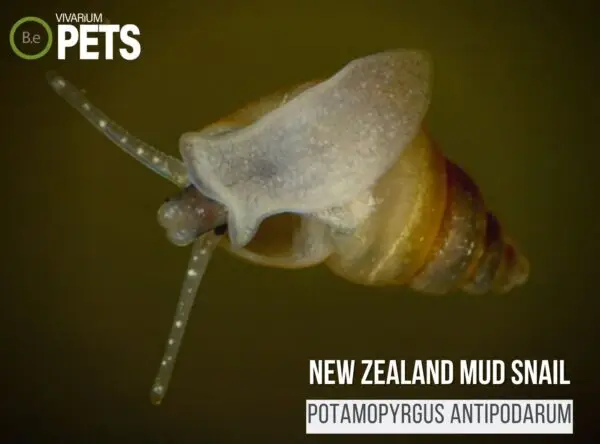

New Zealand Mud Snail (Potamopyrgus antipodarum)


Rabbit Snails (Tylomelania sp.)


Ramshorn Snail (Planorbarius corneus)
Best Type Of Pet Snail Enclosures
When it comes to choosing an enclosure for your pet snail, it’s important to consider the type of snail you’re keeping.
Aquarium snails require an aquarium with a lid, a filter, and plenty of live aquatic plants. A 10–gallon tank should be sufficient for most species.
For land snails, a terrarium is the ideal habitat. Make sure to include plenty of calcium–rich substrates, a humidifier, and a few hiding spots.
Both aquatic and non-aquatic snails should also have access to food, such as algae wafers, vegetables, and fruits.
With the right enclosure, your pet snail will feel right at home.
Best Snail Substrate
The type of substrate you choose for your pet snail is important for their overall health and happiness.
Aquatic snails need a substrate that is easy to burrow as well as scavenge through and won’t cloud the water, such as aquarium gravel or sand.
For terrarium snails, a calcium-rich substrate is recommended, as it helps keep their shells strong and healthy.
Popular substrates for land snails include light terrarium soil mixes, moss, and leaf litter. Make sure to change the substrate regularly to keep it clean and free of bacteria.
Best Plants For Snails
Plants are essential for both aquatic and land snails, as they provide shelter and hiding spots, as well as a source of food.
Aquarium snails will thrive in tanks filled with live plants, such as java fern or anubias.
For land snails, tropical terrarium plants are great for the highly humid environments most snails thrive.
Additionally, any type of low-light terrarium plant will do well with pet snails since they don’t like really bright setups.
Live plants in general are beneficial for keeping the air clean and providing extra oxygen.
How To Set Up A Basic Snail Habitat
This step-by-step guide provides all the information you need to know about setting up the perfect pet snail habitat.
From choosing the right enclosure to adding the necessary substrates, accessories, and food, we’ll provide all the details you need to ensure your pet gastropod is set up for success.
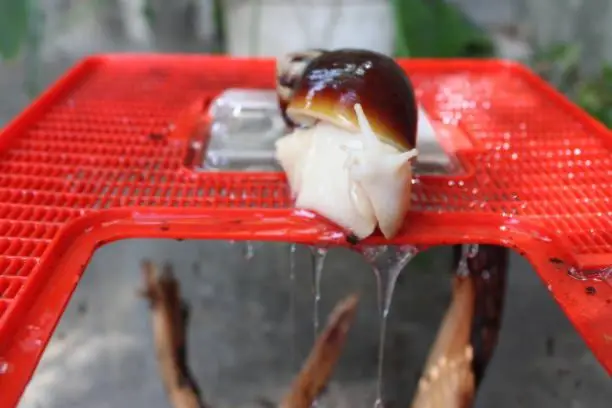

Materials:
Steps to a successful millipede culture
Proper Pet Snail Care
Proper pet snail care is essential for keeping pet snails. Aquarium snails should be provided with a varied diet of algae, vegetables, and fruits.
Land snails need a diet high in calcium, so make sure to offer calcium-rich foods frequently.
Both aquatic and land snails should also have access to fresh water that’s clean and regularly changed.
Additionally, it’s important to keep the entire enclosure clean to prevent any health issues.
Moisture & Humidity
Humidity and moisture are very important factors for our terrarium-based slimy companions.
Land snails require a humid environment to keep their shells from drying out.
Without enough humidity, their shells can become brittle and cracked, making them prone to infection and other health issues.
To increase the humidity in the enclosure, you can use a humidifier or mist the enclosure with water daily.
This will ensure that your pet snail is kept in a safe and comfortable environment at all times.
Feeding & Supplementation
If your pet snail’s enclosure doesn’t provide enough food on its own, you’ll need to supplement its diet with additional food sources.
All snails should be fed a variety of vegetables and fruits, as well as algae wafers.
Land snails will additionally benefit from a calcium–rich diet, consider adding small amounts of cuttlebone powder over their offerings.
Both types of snails should be fed once or twice a week.
I recommend feeding your snails only what they can consume in a few hours to prevent overfeeding and contamination.
Click the image below to learn more about my DIY snail food recipe and best choices.
Identify & Treat Stress
Identifying and treating stress in pet snails will lead to longevity and more severe issues down the line.
Signs of stress can include sluggishness, excessive hiding, and decreased appetite.
If you suspect your pet snail is stressed, it’s important to take steps to reduce the stress.
This might include providing a larger enclosure, more hiding places, or a more varied diet.
Treating signs of stress early on can help reduce potential illness and keep your pet snail healthy longer.
Conclusion
Pet snails can make great companions for those looking for an entertaining and low–maintenance pet.
With the right enclosure and care, your pet snail can live a long and happy life.
This guide provides all the information you need to know about pet snails, including full care guides, enclosure setups, and a list of 18 cute snails worth keeping.
So, if you’re looking for a unique pet that‘s full of personality, pet snails may be the perfect fit for you!
Frequently Asked Questions
Yes, snails can make good pets. They require minimal care and are not as demanding as other pets. They also do not require a lot of space or equipment.
No, snails are relatively inexpensive to keep. They require a small tank, some food, and some calcium supplements. You may also need to invest in some accessories, such as a sponge filter, heater, and air pump. All in all, the cost of setting up and maintaining a snail tank is relatively low.
Depending on the species, some pet snails can live for for more than 10 years if given proper care.
No, pet snails should not be released into the wild. This can be dangerous for both the snail and the environment, as pet snails may spread diseases or compete with native species for resources.
In order to care for a pet snail, you will need a terrarium or aquarium, a lid, substrates such as soil, peat moss, or coconut fiber, water and food dishes, and a variety of items for enrichment such as rocks, logs, and plants. You will also need a calcium supplement to help keep land snails’ shells healthy.
Yes, snails can bond with humans. They can become accustomed to their owners and may even enjoy being handled. However, they may not show affection in the same way as other pets like cats and dogs.
Yes, you can hold a pet snail if you want. Just make sure you do it carefully so you don‘t hurt the snail.
